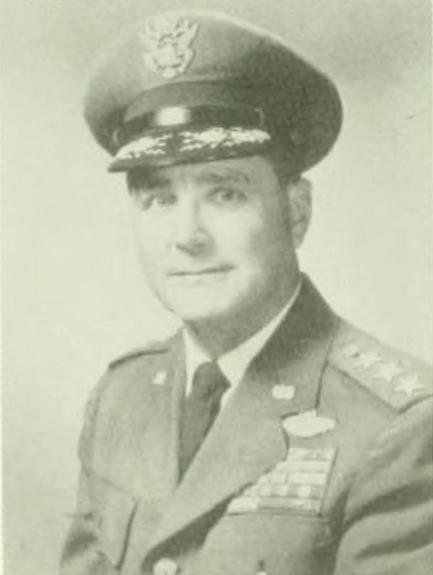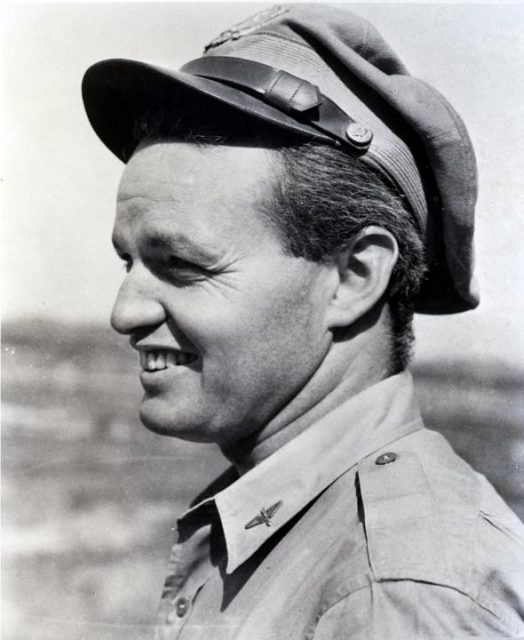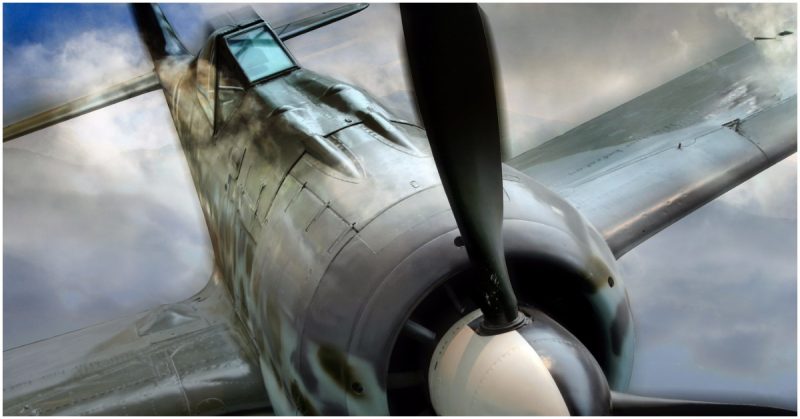Air power was an important part of WWII. For the American pilots who traveled to North Africa to fight the Axis powers, it was a steep learning curve. Many of those who coped with the curve became exceptional pilots.
William “Spike” Momyer
Major Momyer had wanted to be a fighter pilot ever since the day in his childhood when he saw the famed aviator Charles Lindbergh. He was 26 years old when, as commander of the 33rd Fighter Group, he arrived in Africa with Operation Torch.
Before America entered the war, Momyer had flown above the battlefields of North Africa. He had delivered P-40s to the British, who had taken him along as an observer on combat missions. As such, he was the most experienced pilot in the group.
Even Momyer ran into trouble at times, running his fighter aircraft into another plane as they landed at the captured Port Lyautey airfield. From there, he and his squadron moved on to Thélepte, a forward airfield under threat from German ground attack. There he took the lead in preparing the field’s defenses.
Momyer was an excellent combat pilot as well as a leader. The Americans were often flying inferior fighters to the Germans, and so their combat successes were mostly against bombers. Then on January 5, 1943, Momyer scored one of their first kills against a fighter, when he shot down an ME-109 attacking Allied bombers.
As the Americans gained control in the air, Momyer set the pace for his pilots by scoring multiple victories over several days. His most significant success was while fighting over El Guettar. After a messy dogfight against German fighters, he headed toward what he thought were allied bombers to give them support. Realizing they were German Stuka dive-bombers, he tore into them, achieving four confirmed kills and possibly taking down as many as six or eight.

Alton O. “Horse” Watkins
A big, friendly man from Texas, Watkins was one of the most popular pilots in 33rd Fighter Group. He was another pilot who had early success against German fighters. While out attacking German ground troops, he and his fellow pilots were confronted by a group of FW-190s, and Watkins shot one down.
The air war was a brutal business. As Watkins was being groomed to become a squadron commander, tragedy struck. On returning from a patrol, his plane was hit by German fighters attacking the Thélepte airfield. He bailed out of his plane and parachuted to the ground, but could not release the parachute. In a high wind, it dragged him along the ground, causing a fatal head wound.
Walter Scholl
Before entering the war, Scholl was known as a football player. He had thrown a disputed touchdown pass for Cornell against Dartmouth in 1940, a game which made headlines because the pass should not have been allowed.
Scholl brought his sportsman’s reflexes to fighter flying. As part of 59th Squadron, he was one of a group of pilots who had to relinquish their planes when they arrived in Africa, so their French allies had something to fly. He and four other pilots patched together damaged planes which they brought to the front lines. On January 12, 1943, he became the first pilot in his squadron to score a kill, shooting down a German pilot in an ME-109.
The man he had beaten was not just any pilot. Scholl had shot down Hans Herst, a German air ace who had earned the Iron Cross in 1939 for his own skill in the air.
Philip Cochran
A veteran of the peacetime air corps, Cochran was another pilot with a strange sort of fame. He had been friends at University with Milton Caniff, creator of the popular cartoon strip Terry and the Pirates. When Caniff wanted to involve his characters in the real war, he included a pilot called Flip Corkin, who was based on Cochran. A man with no time for the egos of senior commanders, Cochran once got out of a confrontation with General Patton by walking away – ostensibly to get Patton a car but really to sit on a balcony and relax.
Cochran was the commander of Joker Squadron. They were inexperienced pilots there to replace any losses in three other squadrons during the Operation Torch landings. Losses were light, and Joker Squadron was left intact, providing a reserve of pilots and planes.
While Joker Squadron remained in reserve, Cochran helped Momyer to run Thélepte. An observant flyer with a knack for aerial tactics, Cochran contributed to improving the pilots’ skills. He recommended against the instinctive reaction to gain height and speed when the enemy fell on them from above. Instead, they should let the enemy fly past so they could get on their tales.
Later, Cochran was given the task of training the 99th Fighter Squadron, the first black pilots to enter the war. His recommendation that they should be treated like any other pilots and used to fill gaps in experienced squadrons was ignored.

John “Jack” Bent
Bent had a pilot’s license before the war, making him one of the more experienced flyers. At 27 years old, he was also relatively old for a fighter pilot. He served in the air war and was part of Watkins fatal last patrol. When the P-51 fighter was modified into the A-36, to provide the Americans with a dive bomber, he was taken off active duty to act as a test pilot for the new plane.
Levi Chase
With Momyer, Chase was 33rd Fighter Group’s other leading ace. During the fighting in Africa, he rose from captain to major and became commander of the 60th Squadron. On one occasion, he and another pilot shot down a group of German JU-88s bombing Allied troops. It was achieved despite five of Chase’s six machine-guns either jamming or running out of ammunition.
Source:
Orr Kelly (2002), Meeting the Fox: The Allied Invasion of Africa, from Operation Torch to Kasserine Pass to Victory in Tunisia
